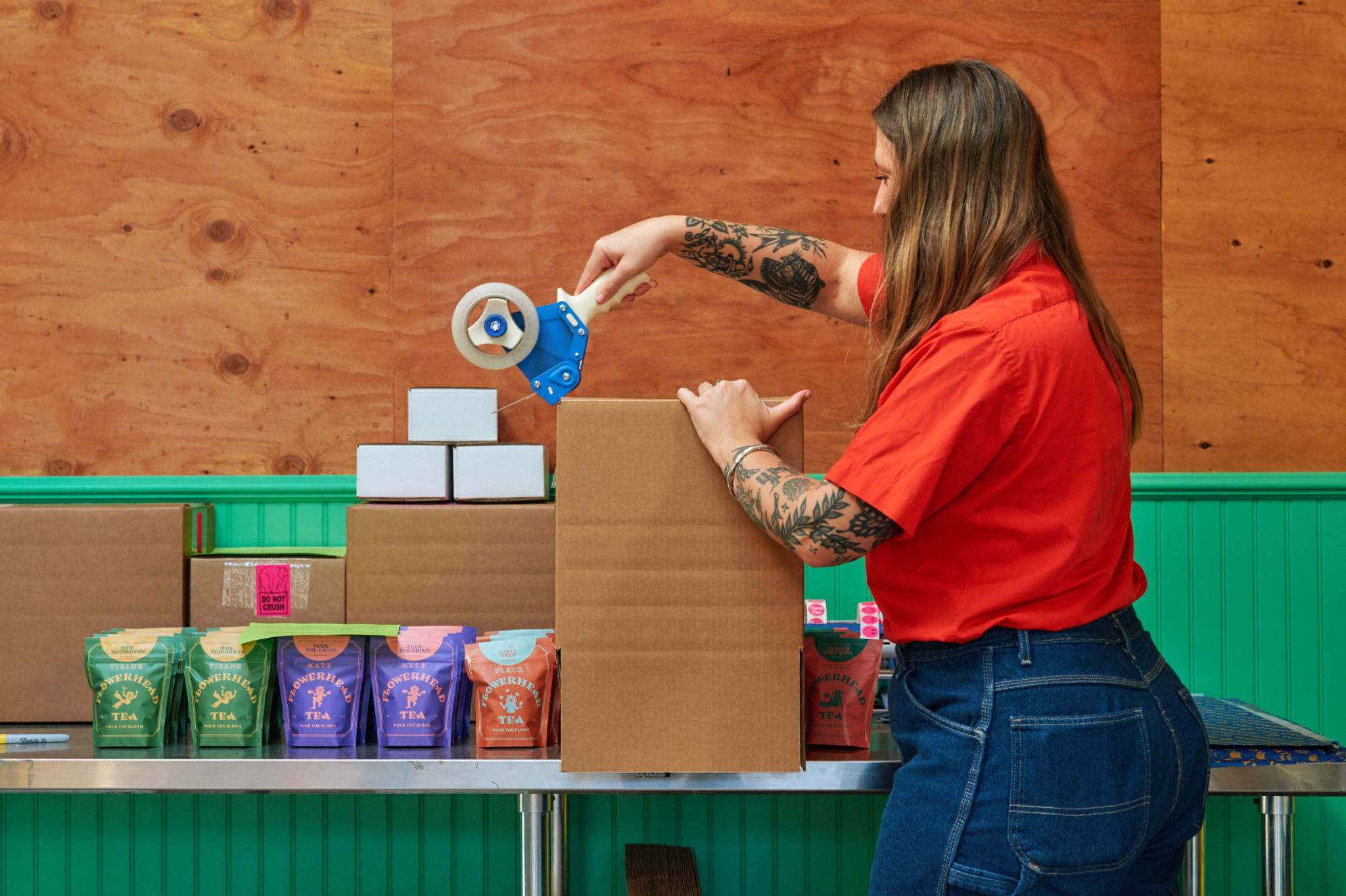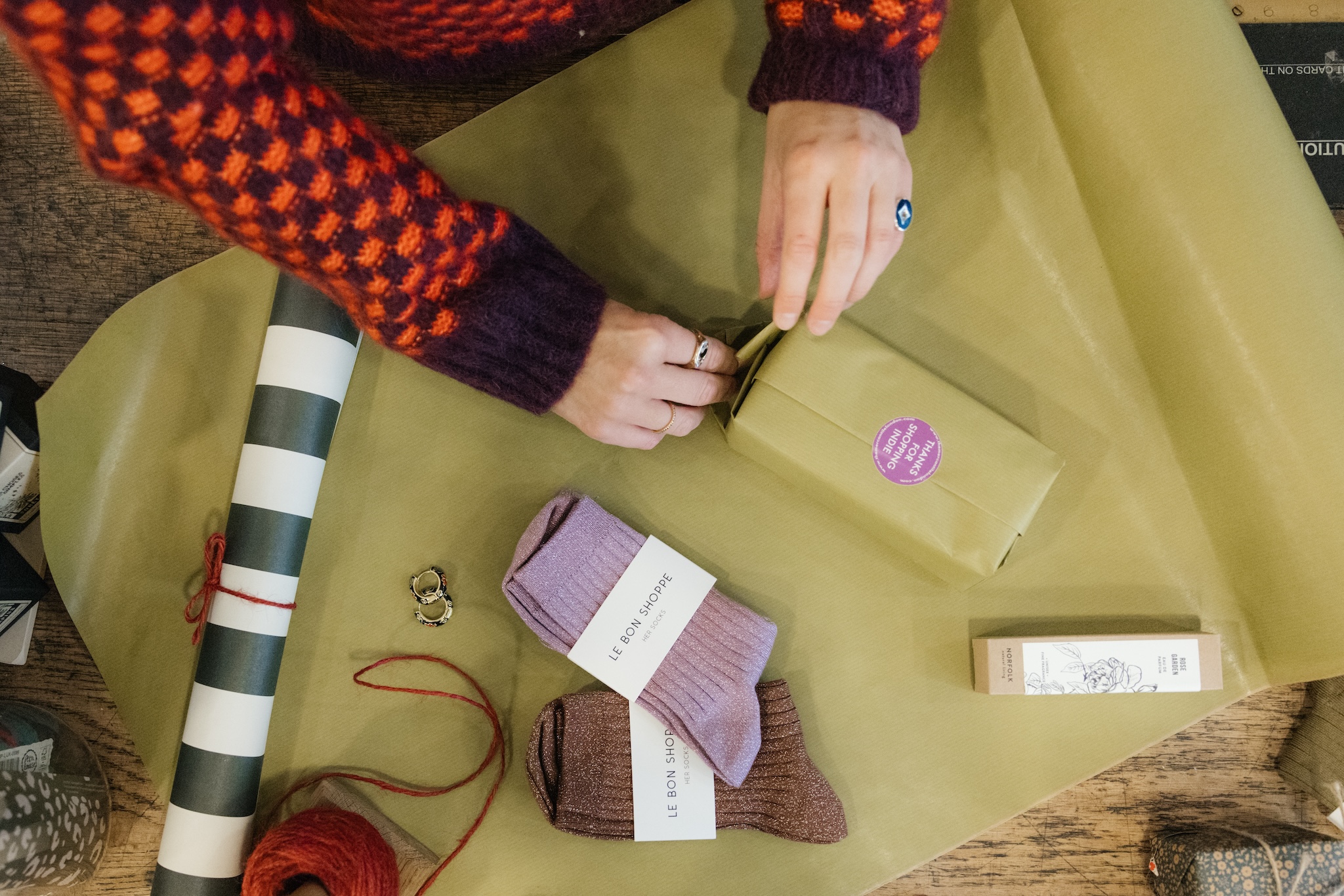

You have a great product. You built a top-notch site to market it. You maybe even secured that warehouse space you’d been hunting for. But now it’s time for the next big frontier: getting your product into retail stores.
Brick-and-mortar stores might have taken a hit over the past few years, but they’re rebounding fast. Forrestor predicts that brick-and-mortar sales will increase to 72% of the retail market by 2028. Even those who navigate online shopping with ease still seek the tactile and immediate experience of shopping in a physical store. Landing your products in a retail store can boost your visibility and put your brand into the hands of more shoppers.
Below are the steps you need to take and the questions you need to ask to get your product in front of retailers and on their shelves.
Is your brand ready for retail?
Getting your homemade products into stores is a major step, and you need to make sure your brand is at the right stage for it. Is your business capable of producing enough inventory to support retail shops? If you have been selling directly to consumers up to now, retailers will likely place much larger orders than you’re used to.
Be honest about your bandwidth and limitationsUnderstand how much inventory you’d need to produce to sell to retailers and whether or not you can afford to scale up your output. A retail presence is not something you want to rush.
1. Do some research on your target audience
Before you jump into action, it’s important to spend some time thinking about your ideal shopper. Who would most appreciate your product? Where do they shop and what is their lifestyle like? How do they spend their time?
There are a few ways to learn about target audiences, like sending out surveys and reading marketplace studies. Getting data back from questionnaires can help you home in on audience demographics, and trend reports can let you know whether your product is in high demand.
It’s also a good idea to browse stores that sell similar products to yours. If you sell premium, organic linen, find out where other luxury linen brands tend to sell their wares. Are they in dedicated bedding stores? Or high-end, highly aesthetic, lifestyle-driven boutiques? Getting specific about the type of store your ideal shopper would gravitate toward is key when you’re assessing retail partners.
2. Establish your brand’s look and feel
In the early days of your brand, you may have created marketing materials or mood boards to express your company’s ethos. This is often referred to as a brand identity. Now is the time to revisit and update your brand identity before you approach retailers.
Often, the first way retailers and shoppers interact with your brand is through your social media presence. You don’t have to be an expert, but posting regularly and ensuring your product photography and branding are strong goes a long way. Is your logo still feeling fresh? Are you still happy with your brand’s color palette? Do your slogan and mission statement need to be reworked? Make sure you’re satisfied with all these aspects before you approach retailers.
Incohesive branding, a poorly designed website, or even an inauthentic brand story can turn off potential partners. You get only one first impression, so make sure your brand is polished.
3. Package your product
Your product’s packaging design is often the first impression to a customer, so it’s important to focus on what message your product is trying to convey. Outstanding product packaging and labeling can stand out to both retailers looking for products to sell in their shop as well as potential buyers.
When designing your product packaging, ensure that it fits the following criteria: Does it protect the product during transport? Does it provide the customer with information about the product? Does the packaging convey the right message about your brand or promote the product? Take these questions into consideration when designing your product packaging.
4. Set your wholesale price
It’s important to understand your wholesale pricing strategy when getting your product in retail stores. Wholesale pricing is the price that a retailer pays for a product that is bought in bulk. To ensure a profit, brands must calculate the cost of goods, labor, and overhead with a profit margin. A good wholesale profit margin is 30-50%, but can vary according to the industry.
For example, it costs you $10 in goods and labor to make a beautiful pair of earrings. Using a 50% profit margin would provide you with the wholesale price of $20.
Using the wholesale price, you can also figure out the product’s MSRP (manufacturer’s suggested retail price), which is the price you suggest retailers sell your product for. The MSRP is typically 50% of the wholesale price, so using the above example, the retailer would sell the earrings for $40.
Note: the MSRP is different from retail price. Learn about the difference between retail price and MSRP.
5. Put yourself out there and network
One of the most powerful ways you can meet new wholesale buyers and network is by attending trade shows. They’re a very effective way to meet many retailers all at once, without having to individually reach out for meetings on your own.
Research wholesale trade shows in your area and consider attending if vendors you’re interested in will be there. (Virtual trade shows, such as Faire Markets, are also a great option.) Not sure where to start? This article will help you get the most out of the trade show season. Once you’ve made some connections, be sure to stay in touch and keep those relationships alive all year long.
During the off-season, it’s a good idea to get to know local shop owners and buyers and become a friendly face in their stores. You might attend retail events like grand openings or soft launches so that you can make inroads with retailers early on. Building a community is essential—you’ll get to know what retailers need and whether your product might be the right fit for their store.
6. Prepare and finalize your pitch
Once you land a meeting with a buyer for a store, prepare your talking points and presentation to put your best foot forward. Practicing your pitch with a mentor, a peer, or even by yourself in the mirror can give you the confidence you need in these important meetings. Be sure to be your own best cheerleader! You have a great product and a powerful brand, you just need to make a clear and compelling case to a buyer.
Create a data-driven pitch deck that is easy to follow. Show that you understand the retail store’s audience, your brand’s specific niche, and how those two elements connect. For instance, if you’ve already been selling your product directly to consumers, you might bring sales data to prove its popularity or showcase your customers’ rave reviews. By the end of your succinct pitch, the buyer should clearly understand why your product is a match for their shoppers and why your brand can be a reliable supplier of that product.
7. Take advantage of online marketplaces
Connecting with retailers doesn’t always mean pounding the pavement. You can also make those connections digitally through online marketplaces. Platforms like Faire connect wholesale brands with hundreds of thousands of independent retailers in one place, which makes it much easier to find potential partners.
A smart move is to tailor your online presence in order to attract and capture the right retailer. On Faire, you can tag your brand with descriptors like eco-friendly, handmade, or Made in the USA so that you appear in the results when retailers search with those filters. You can also optimize the metadata and product descriptions on your Faire profile to show off what makes your brand special or share your brand story. Faire also offers retailers benefits such as 60-day net payment terms and free returns on first orders.
Getting your brand into retail stores can be a boon for your business, but it requires some thoughtful planning and strategy. By doing your research and preparing in advance, you can ensure your brand resonates with retailers and opens more doors for your business.




